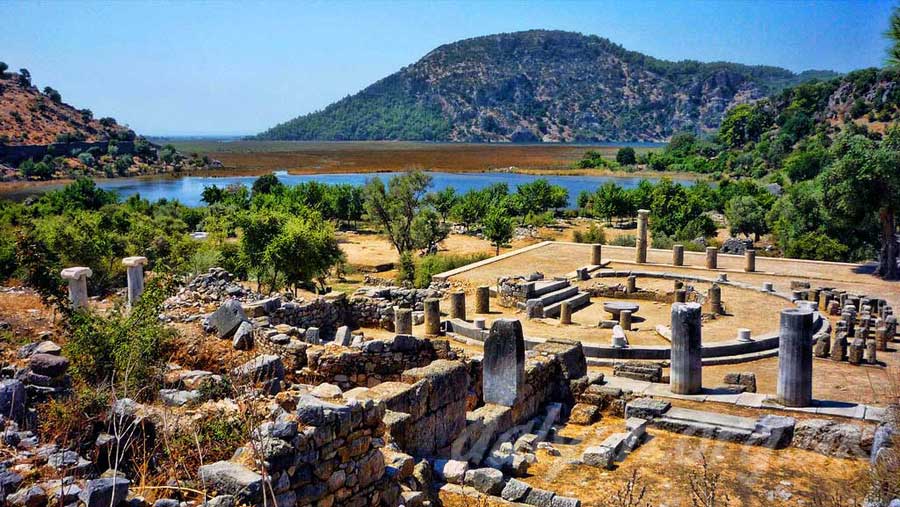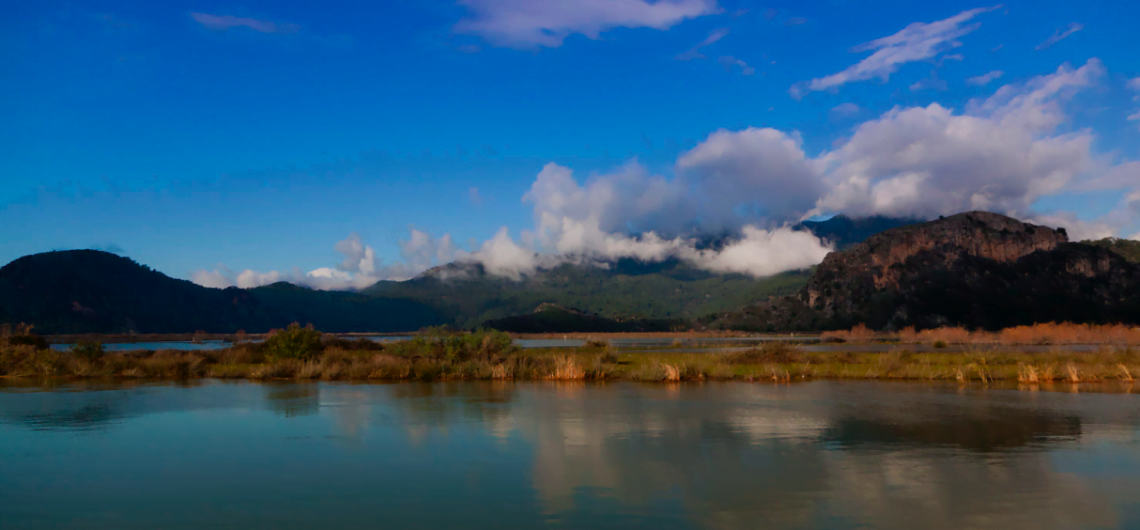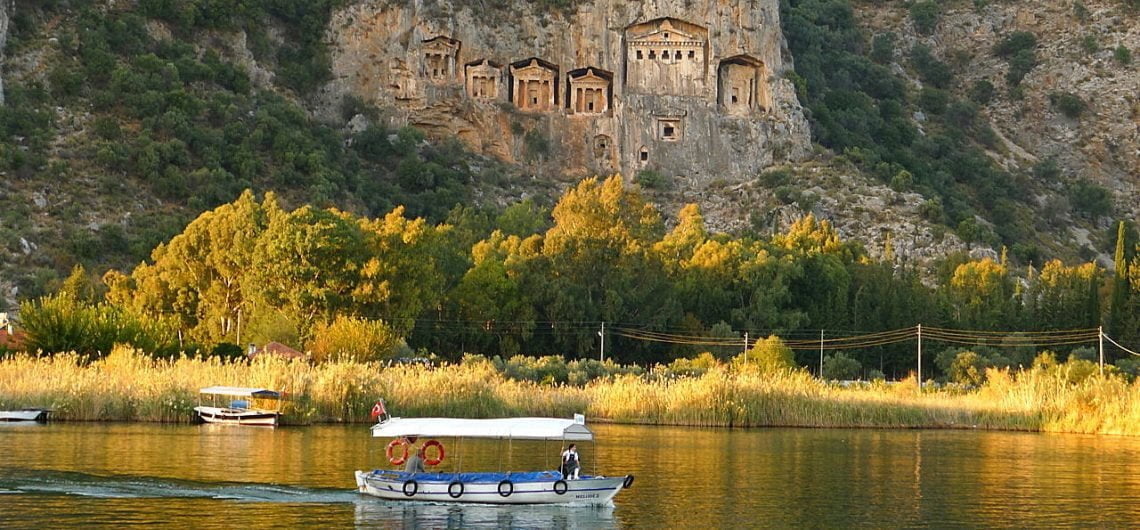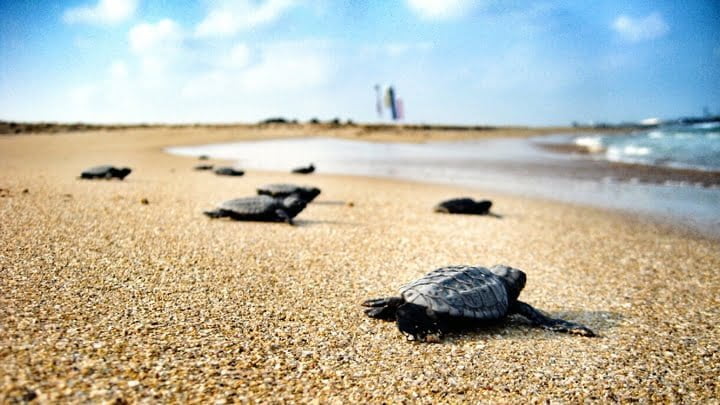The most ancient find of the Caunos excavations is a piece of a protogeomeric amphora dating back to the 9th century BC. In addition to this, the geometrical style designs of ceramic vessels patterned with concentric circles drawn between lateral bands or with semicircular motifs, were products of local pottery workshops and Herodotus’ comment that the people of Caunos were the natives of the land, brings to mind a settlement that dates far back. However, no architectural objects that can be dated to before the 4th century BC have been found in Caunos as yet.
While giving important information of Caria’s history and Caria’s cities during the Persian Wars, Herodotus, whose father was a Carian from one of the prominent families of Halicarnassus, and whose mother was a Cretan, speaks of Caunos saying: “Harpagos (Persian general), who brought Ionia to heel, marched against the Carians, Caunosians and Lycians.”This passage relates to the Persian invasion of Western Anatolia in 546 BC, with Caunos and its adjoining cities highlighting it as an independent region with a different language and different customs. In Chapter 1.72 of his History, Herodotus elucidates : “I believe that the inhabitants of Caunos are natives of the region. But they say that they came from Crete. Carian influence is traceable in their language, or vice versa…”
In the Anatolia of antiquity many people some of whom were natives of the land and others immigrants, lived in separate regions defined by geographical boundaries Historians and geographers of the First Era used to give the names of places according to their inhabitants. That is why Caria means Land of the Karians.” This country of mountains, highlands and plateaus cover the south of today’s Aydın, the southwest of Denizli and the entirety of Mugla (apart from Fethiye). This expansive area encompasses the lace-like Aegean coast, bays, peninsulas and islands.
Cevat Şakir Kabaagaçlı, known by his penname, “the Fisherman of Halicarnassus”, writes about the “Sea Islands” as follows: The Aegean coast is a place where bays and headlands embrace the sea… Noble peaks and great headlands fall into the sea, rise out to become islands. These headlands that dip in and out of the sea form a series of islands, just like a line of pearls.”
The blue crabs that were brought to Turkey for their economic value and released in lagoons in the Northern Aegean and the Saros Bay reproduced and multiplied. However, probably because they were not able to find the natural conditions they required in this region, they migrated to the Southern Aegean and inhabited the Güllük and Dalyan lagoons, extending right over to the Karadeniz fish trap in Taşucu. Today a large number of blue crabs are hunted in the Dalyan delta and are served by restaurants with various sauces and cooking methods.
Sea turtles are one of the oldest species alive on the planet earth. It is essential that they are protected and treated in case of injury in order to ensure the continuation of the species. In America, Mexico and Brazil, where the beaches are 40-50 km long, there are sea turtle research and treatment centres at almost all of the beaches. In the Mediterranean, there are Sea Turtle treatment centres in Italy, Greece and Israel. The fact that such a centre was founded in Dalyan, at Iztuzu Beach, and was chosen the “Best Open Air Zone of Europe’’, is significant in terms of promoting Turkey’s reputation.
Sea turtles have been living on earth for 110 million years, the human being, however, for only 2-3 million years. Of the eight species living in the world’s seas, five are present in the Mediterranean. It is estimated that only a limited number of individuals of the Leatherback Sea Turtle (Dermochelys coriacea), the Hawksbill Sea Turtle (Eretmochelys imbricata) and the Kemp’s Ridley Sea Turtle (Lepidochelys kempii) species enter the Mediterranean for nutrition or by mistake.







